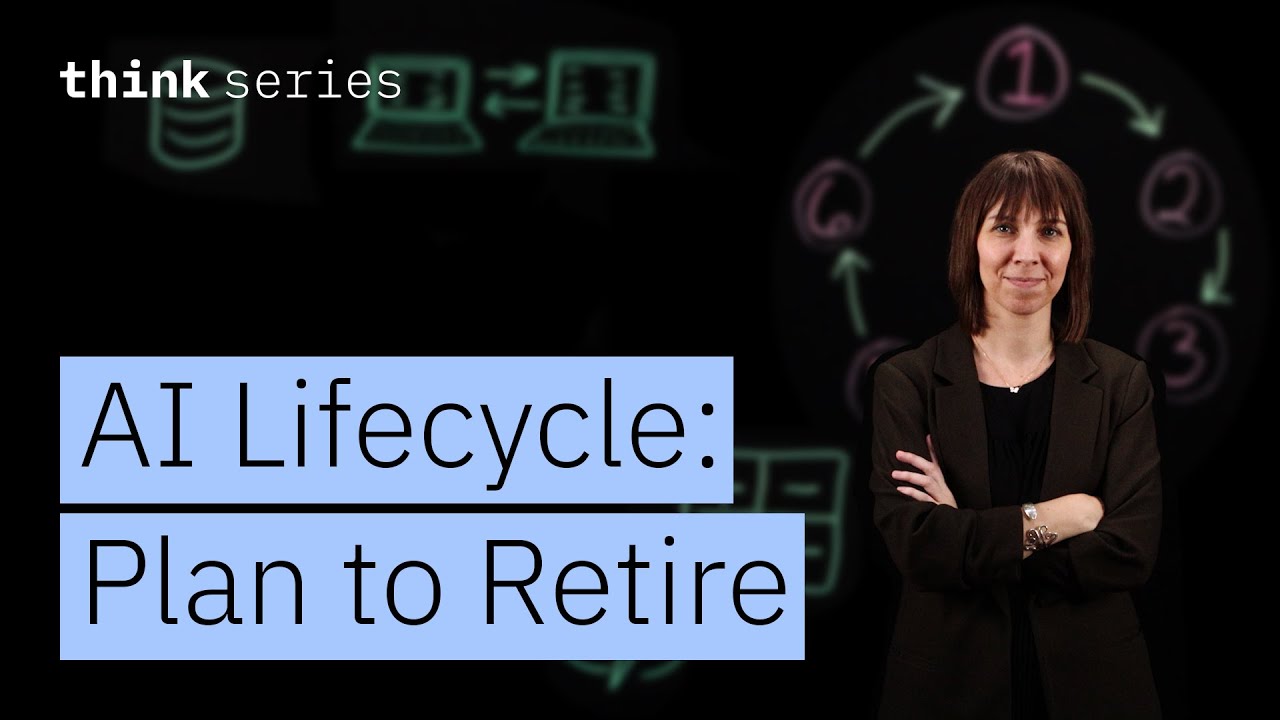The video outlines the AI model life cycle from careful planning and ethical data preparation to development using advanced architectures, thorough evaluation for fairness and compliance, and secure deployment with continuous monitoring. It emphasizes the importance of aligning model goals with user needs, addressing biases, and responsibly retiring models to ensure trustworthy and effective AI solutions.
The video begins by emphasizing the importance of careful planning in the AI model life cycle. It encourages defining the model’s purpose, target users, and desired functionalities. Using the example of a conversational AI designed to help users create recipes, it highlights the need for clear objectives to avoid inappropriate outputs, such as recommending non-food items. This stage sets the foundation for the entire development process by aligning the model’s goals with user needs and ethical considerations.
Next, the video discusses the critical role of data collection and preparation. It stresses sourcing high-quality, diverse, and ethically aligned training data relevant to the use case, such as recipes from reputable sources and conversational data. The importance of data cleansing is also covered, including removing personally identifiable information (PII), deduplication, handling missing values, and standardizing formats. Bias checks are essential here, and if imbalances are found, synthetic data generation can help create a more balanced dataset.
The development phase focuses on selecting appropriate algorithms and architectures. For the conversational recipe model, the video suggests using transformer architectures, known for their effectiveness in processing and generating text. It also introduces the concept of mixture of experts, combining smaller specialized models to enhance performance while reducing computational costs. This phase lays the technical groundwork for building a robust and efficient AI model.
Evaluation and validation are crucial to ensure the model’s fairness, accuracy, and compliance with regulations like the EU AI Act. The video recommends establishing an AI governance review board to oversee these checks. Testing should include measuring performance across different demographic groups and brainstorming edge cases to uncover potential issues. If disparities or biases are detected, adjustments to the algorithm or data augmentation with synthetic data can help address them.
Finally, the video covers deployment, monitoring, and retirement. Deployment should be automated, secure, and scalable, often leveraging cloud platforms with proper infrastructure setup. Post-deployment, continuous monitoring for model drift, performance metrics, and fairness is necessary to maintain trustworthiness. Automated retraining pipelines and alerts help keep the model up to date. When the model is no longer needed, it should be archived responsibly for potential future use. Overall, the video provides a comprehensive overview of the AI model life cycle, emphasizing ethical development and ongoing stewardship.
